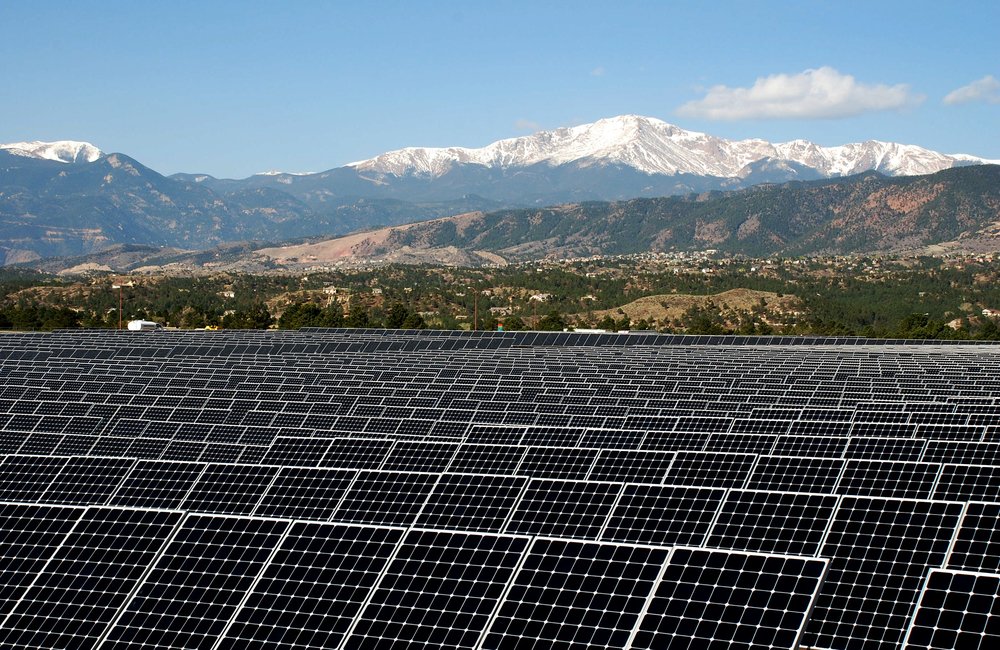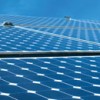Improving Solar Panel Inspection with Infrared Imaging
Infrared and electroluminescence imaging cameras are being used on tripods and aerial drones to inspect massive fields of photovoltaic modules.
In 2019, about two percent of the world’s total electricity came from photovoltaic solar panels. In the United States, about 3.27 percent of electricity was generated by photovoltaic cells, and solar accounted for 4.37 percent of the United Kingdom’s electricity.
Compared with twenty years ago, these are impressive numbers. But the transition from fossil fuels to renewable energy sources can’t go fast enough. Solar power energy production is going to have to accelerate drastically within the next few decades if the world wants to cut carbon emissions and mitigate worst-case climate change scenarios.
Photovoltaic (PV) modules—solar panels or cells—are not a low maintenance method of energy production. While the panels just sit in the sun gathering energy, the largest solar farms in the world require continual monitoring, calibration and repair. The largest solar power plant in the U.S. is called Solar Star and resides in the Mojave Desert in Rosamond, California, about an 80-mile drive north of Los Angeles. The 579-megawatt plant consists of 1.7 million solar panels spread across 13 square kilometers. Manual inspection of each panel across such a large space would require a prohibitive amount of effort.
Instead of manual inspection, companies are turning to automation to ensure panels are receiving light at peak efficiency. An aerial drone equipped with infrared or electroluminescence cameras combined with machine learning algorithms can cut inspection time in half.
Using Infrared to Inspect Photovoltaic Modules
Imagine a flat screen television. A picture is emitted from the screen through its pixels, tiny areas of illumination that make up its surface area. When the television is in use, those pixels heat up, theoretically in a uniform way across the screen. If you wanted to inspect the performance of those pixels, you could use an infrared camera and determine if some of the pixels are operating at different temperatures.

Photovoltaic modules operate in a similar way. Given clear and consistent conditions, all the cells within the solar panel should heat up in the same way. Anomalies in the heat output from the surface area of a solar panel could be the sign of a faulty diode or another problem within the system. Infrared thermography (IRT) can detect these heat fluctuations and help engineers determine the source of the problem.
According to a 2018 report (PDF) from the International Energy Agency (IEA), common thermal abnormalities that can be measured with an IR camera in photovoltaic power plants include:
- Hot spots caused by breakage or glazing of the panel’s glass; external shading such as from a nearby tree or bird dropping; or internal cell problems introduced in the manufacturing, transportation, or installation process.
- Heated bypass diodes caused by the module’s junction box.
- Heated fuses within the combiner box of the PV module.
- Heated DC and AC cables and connection points. Light energy is captured in direct current form and must convert to alternating current before being introduced to the power grid.
Temperature gradients under 10 degrees Celsius are not considered problematic. Gradients over 20 degrees Celsius can cause degradation of a panel’s output.
According to the IEA, the primary requirements for an IR camera for PV module inspection include:
- Resolution: lower class cameras will have a resolution of 160 x 120 pixels while professional class cameras will have a resolution of 640 x 480.
- Thermal sensitivity: is the granular measurement of heat. Lower end cameras will have a sensitivity of >70 mK while professional class cameras will have sensitivity of 50 mK or better.
- Accuracy: Professional cameras will have accuracy of plus/minus 1 degree Celsius.
- Visible light digital camera: IR camera systems should also be equipped with a digital camera with up to five megapixels resolution to take pictures of abnormalities.
- GPS recording: to add location metadata to each IR image.
The Teledyne DALSA Calibir GX series of IR cameras fit many of these requirements, with resolutions of 320 x 240 or 640 x 480 pixels. They can measure temperatures from -25 to 600 degrees Celsius and can cover the longwave infrared range of 8 – 14 microns, with a temperature accuracy of plus/minus one 1 degree Celsius.
How Electroluminescence Imaging is Used in Photovoltaic Inspection
Electroluminescence (EL) is the phenomenon in which a material emits light when applied with an electric current. When using electroluminescence imaging to inspect a solar panel, the photovoltaic module must first be applied with an electric current and then be imaged with a camera that is sensitive to the light wavelength of the material being observed (commonly a type of crystalline silicone). Electroluminescence imaging looks for defects within a PV module such as cracks, short-circuited cells, shunts or layer defects.
Electroluminescence imaging works best in low light situations and is typically done indoors during the inspection period after the manufacturing of a PV module, or outside in evening or nighttime scenarios. The camera needs to be perpendicular to the PV module and as close as possible, either with a special tripod or an aerial drone that can get very close to the inspection area. Electroluminescence imaging cameras tend to come with a Charge Coupled Device (CCD) or Complementary Metal Oxide Semiconductor (CMOS) sensors.
Electroluminescence imaging cameras can range from sophisticated devices with onboard cooling components, to modified consumer-grade DSLRs. Line scan and area scan cameras—including the CMOS-equipped Linea family of line scan cameras from Teledyne DALSA—are also used to inspect photovoltaic modules.
According to the IEA, the primary requirements for an EL imaging camera for PV module inspection include:
Electroluminescence imaging cameras for PV module inspection include a CMOS sensor with Resolution >1 megapixel on the lower end to 5 megapixels for professional grade imaging.
Continued Growth for Renewable Energy
The U.S. Federal Energy Regulatory Commission (FERC) noted in autumn 2020 that the country’s total available installed generating capacity included about 23.2 percent from renewable energy. About 63.3 percent of the new capacity added in the first two-thirds of 2020 came from renewables. Power from coal continues to fall (about 20.1 percent), with the reminder of generating capacity largely coming from natural gas.
Solar is a large part of that mix. The generating capacity of wind and solar combined was 13.3 percent, a figure that does not include residential rooftop solar, which is a rapidly growing market in its own right.
According to FERC, renewable sources of energy will grow to 27 percent of the country’s capacity by 2023, led by new wind and solar installations.
The opportunity for green energy to grow is boundless . . . and necessary. The evolution of the power grid will require the development and maturation of new supply chains and processes, such as the increase in production of lithium-ion batteries, and quality assurance procedures, like making sure that solar panels are operating at optimal efficiency.



 Solar Cell Manufacturing meet Goals
Solar Cell Manufacturing meet Goals  How Machine Vision is Enabling the Future of Lithium-Ion Batteries
How Machine Vision is Enabling the Future of Lithium-Ion Batteries 